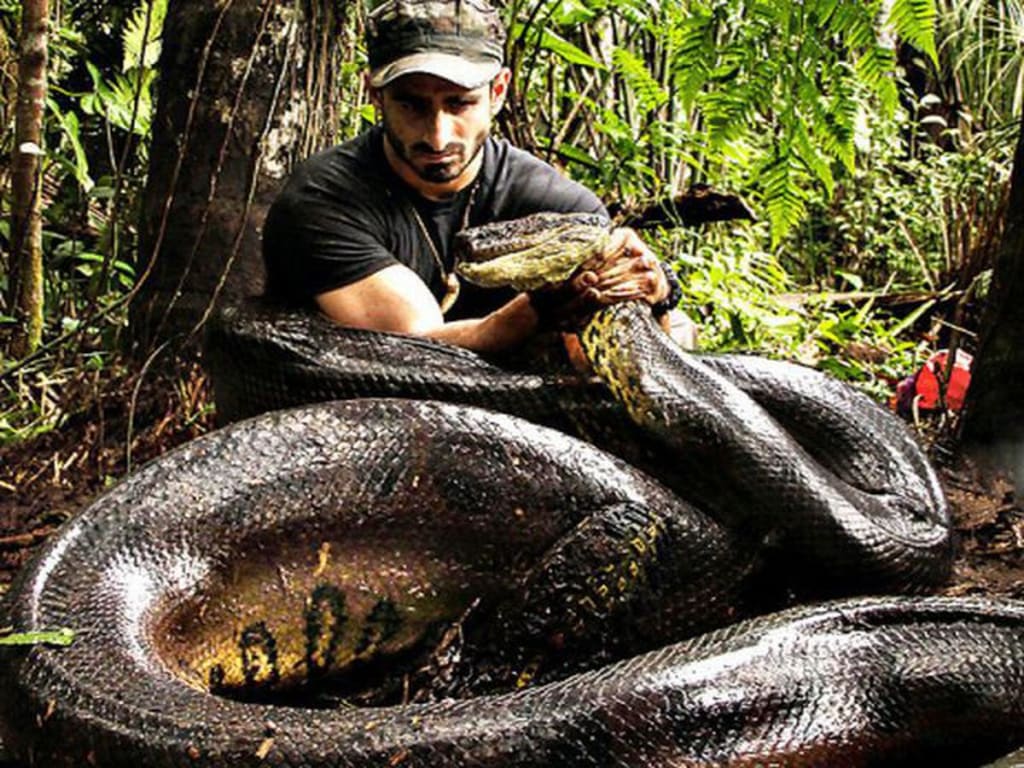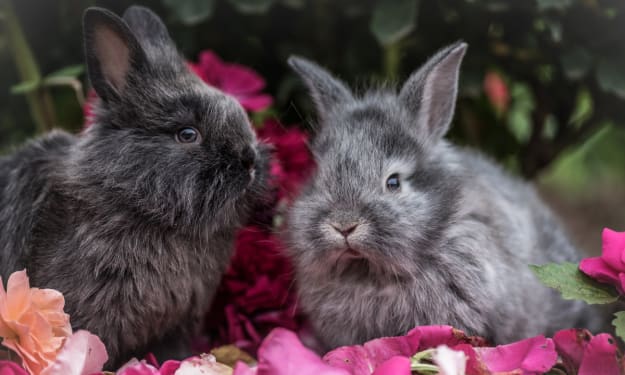The Anaconda
The Majestic Anaconda: A Striking Creature of the Wild

The anaconda is one of the most feared and admired creatures in the animal kingdom. Found in the tropical rain forests of South America, these large, non-venomous snakes have become a powerful symbol of the Amazon and its mysteries. While there are a few different species of anaconda, the most commonly known species is the green anaconda (Eunectes murinus). This immense snake can grow up to 17 feet (5.2 meters) and weigh up to 550 pounds (227 kilograms). Anacondas can be found in tropical South American countries such as Bolivia, Brazil, Colombia, Ecuador, French Guiana, Guyana, Peru, Suriname, and Venezuela.
Anacondas are semi-aquatic, so they spend a lot of their time in or around the water. They are excellent swimmers and can remain submerged for up to 10 minutes. They also have a long, powerful tail that helps them move quickly and easily in the water. On land, they typically move slowly, using their muscular body to push themselves forward.
Anacondas are carnivorous animals, meaning they feed on other animals. They typically hunt during the night and ambush their prey, quickly wrapping their body around it to strangle it. Anacondas have been known to prey on a variety of animals, including birds, rodents, fish, sheep, and even jaguars.
Anacondas have a wide array of adaptations that help them survive in their environment. The most notable adaptation is their eyes, which are located on the top of their head, allowing them to see prey even when the snake is submerged in water. They also have nostrils on the top of their head, allowing them to breathe while underwater. Anacondas have heat-sensing pits located on either side of their heads, enabling them to detect prey even in the dark.
Anacondas are solitary creatures and typically only come together to mate. The female anaconda will lay her eggs in a shallow body of water, such as a swamp or pond. She will then coil her body around the eggs and remain there until they hatch, protecting them from predators. After hatching, the young anacondas are independent and must fend for themselves.
Anacondas have a long life expectancy and can live up to 10 years or more in the wild. In captivity, they can live up to 20 years. Anacondas are considered a vulnerable species due to habitat destruction, hunting, and pollution. As a result, many countries have put laws in place to protect them.
Anacondas may be feared by many, but they also have a profound beauty and grace. They are an important part of the tropical rainforest ecosystem, and with proper conservation, they can continue to thrive for generations to come.
Anacondas are one of the largest and most feared snakes in the world. Native to the Amazon and Orinoco river basins of South America, anacondas are part of the boa constrictor family, which includes some of the largest snakes in the world. These powerful reptiles can grow to be more than 20 feet long, and they are especially well-known for their ability to squeeze their prey to death. Anacondas have a special place in mythology and folklore all over the world, and they are the subject of countless horror films and books.
Anacondas are typically dark green or black in color with tan or white markings. Their scales are usually diamond-shaped, and their eyes are usually yellow or gold. Anacondas have long, muscular bodies and thick tails that they use to swim in the water. They have sharp, backward-curving teeth, as well as a powerful jaw that helps them grab and hold their prey. Anacondas are non-venomous, but they do have a row of sharp teeth that they use to tear their prey apart.
Anacondas are ambush predators, meaning they wait for their prey to come to them. They are most active at night, when they hunt for fish, birds, small mammals, lizards, and other snakes. Anacondas have been known to eat larger animals, like deer, tapirs, and even jaguars. They usually eat their prey whole, and can consume animals up to one-third their own size.
Anacondas live in a variety of habitats, including rivers, swamps, marshes, and flooded forests. They prefer slow-moving or still bodies of water, where they can easily hide and ambush their prey. Anacondas usually live in burrows that they dig in the mud or shallow water, and they use their tails to create a waterproof seal around the entrance of the burrow.
Anacondas are solitary animals, meaning they prefer to live alone. They are territorial and will fight other anacondas if they feel threatened. Anacondas are also extremely territorial when it comes to mating. Males will compete for the attention of a female, and they will even fight to keep other males away.
Anacondas typically reproduce between August and December. Female anacondas lay a clutch of up to 40 eggs, which they guard until they hatch. The eggs are incubated in the female's body, and the young anacondas are born alive. Anacondas are viviparous, meaning they give birth to live young.
Anacondas are one of the most feared creatures in the world, but they are also one of the most fascinating. They are powerful predators, and their size and strength make them a formidable force in the wild. Anacondas have been the subject of myths and legends for centuries, and they continue to captivate the imaginations of people all over the world.
About the Creator
Enjoyed the story? Support the Creator.
Subscribe for free to receive all their stories in your feed. You could also pledge your support or give them a one-off tip, letting them know you appreciate their work.






Comments
There are no comments for this story
Be the first to respond and start the conversation.